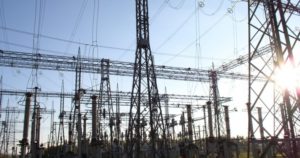 The energy market has changed dramatically in the last 20 years. Growth now comes from Asia rather than Europe or the US. Shale gas and oil have been developed, transforming the established pattern of trade. Renewables have seen costs fall year by year. At the macro level, demand has risen with tens of millions of new consumers able to buy the energy they need for the first time. In 2000 just over 80 per cent of total energy demand was met by hydrocarbons — oil, gas and coal. In 2018, that percentage was exactly the same. As a result, with absolute volumes higher, emissions have inevitably continued to grow. By this measure, the energy transition has hardly begun. The question is whether there will be another change in the energy market which will meet the challenge of climate change and the risk of global warming.
The energy market has changed dramatically in the last 20 years. Growth now comes from Asia rather than Europe or the US. Shale gas and oil have been developed, transforming the established pattern of trade. Renewables have seen costs fall year by year. At the macro level, demand has risen with tens of millions of new consumers able to buy the energy they need for the first time. In 2000 just over 80 per cent of total energy demand was met by hydrocarbons — oil, gas and coal. In 2018, that percentage was exactly the same. As a result, with absolute volumes higher, emissions have inevitably continued to grow. By this measure, the energy transition has hardly begun. The question is whether there will be another change in the energy market which will meet the challenge of climate change and the risk of global warming.
The most likely and promising advance of the next 20 years is the creation of a truly global energy market built around long distance high-voltage power grids. Historically, the power losses suffered along large transmission distances have constrained the ability of local grids to smooth out fluctuating energy demand and supply across different time zones and international borders. But transmission systems that are more capable of preserving the bulk of their power over many hundreds of miles now exist.
In China, a network of ultra high voltage grids crosses the country from the remote areas of the west to the cities on the eastern coast (pictured above). Over Rmb400bn ($60bn) has been invested and another 12 grid projects should be operational by the end of this year. China’s internal grid can be expanded well beyond its borders. Proposals for a grid stretching to South Korea, Japan and eastern Russia are under discussion. The concept of a grid from western China to Europe has been floated by Shu Yinbiao, the energetic chairman of the State Grid Corporation of China. The distance may be long — 5,000km from western China to Berlin — but high-voltage grids are efficient and power losses are low compared with existing grids.
The development of new grids will start with existing national structures, but there is a powerful logic in favour of creating over time a network which can connect across continents. A grid of this sort would be open to all — producers and consumers. Think of an internet of energy supplies. Such a structure, which could be built now, using existing technology, would transform the market in two ways. First, it would eliminate the challenges and system costs associated with the intermittency of solar and wind supplies and the need to have in place back-up supplies. Wind and solar would be much cheaper as a result — decisively reducing the current costs of renewable electricity supplies and undermining the current cost advantages of coal.
That in turn would encourage the process of electrification in sectors such as transportation and heating. Significant parts of the transport sector, such as aircraft and the heaviest trucks, would still remain dependent on oil. That will not change until battery technology takes another large step forward. Some countries would resist any shift away from coal for fear of job losses. Climate change would remain a risk — as electrification would only reduce emissions provided that the power was supplied by renewables rather than coal. And the existing levels of carbon concentration in the atmosphere would remain in place. Over time, however, the impact could be enormous.
Source: “Wanted: Long-Distance High-Voltage Grids That Can Link Continents”, Financial Times
